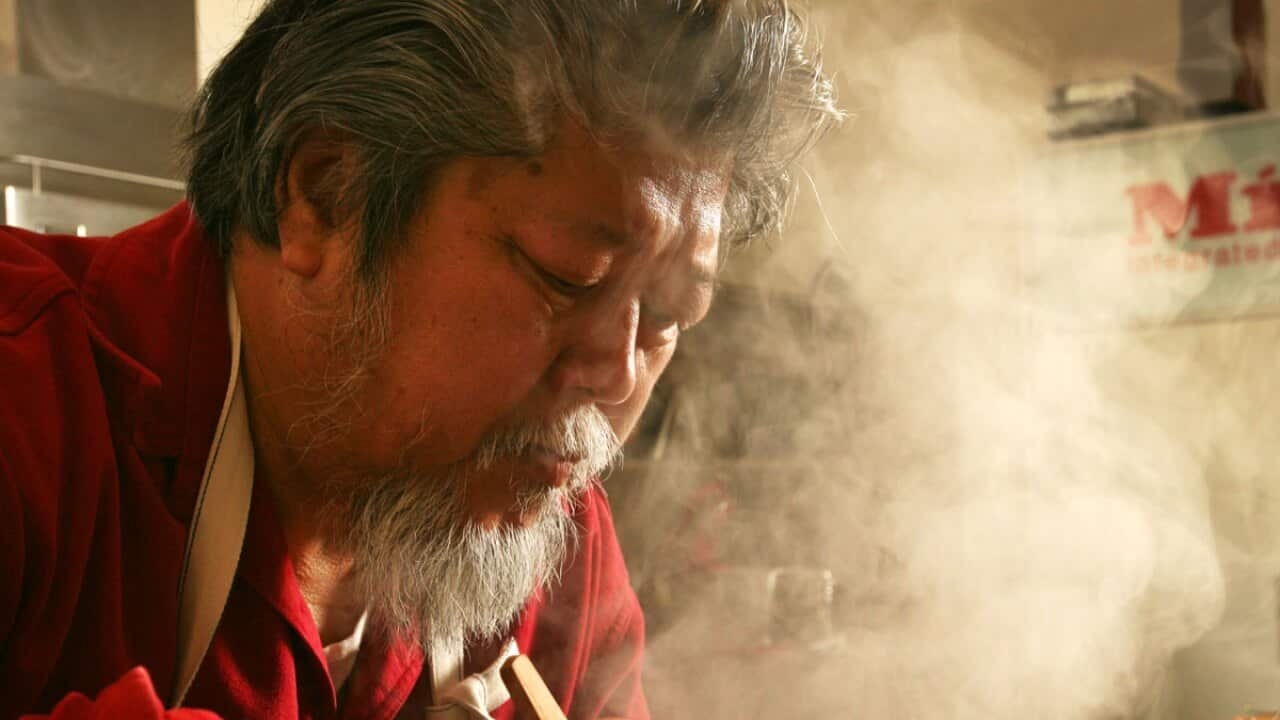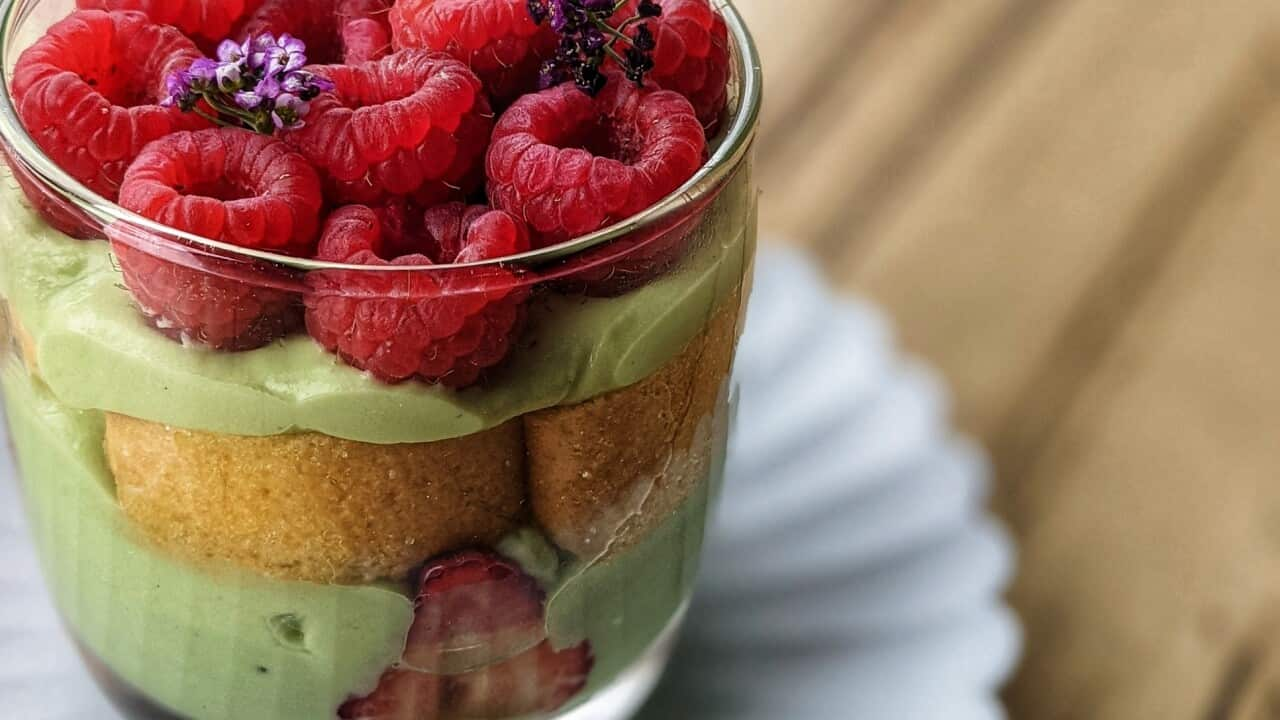Food has always been the theme of ’s life. The legendary Malaysian-Australian chef grew up in Kuala Lumpur, where he witnessed his grandmother’s artistry in the kitchen. Her inventiveness would stay with him.
“We grew up in a family where the matriarch cooked all the food – my grandmother wouldn’t let her daughter-in-law do anything, she was the executive chef,” Liew says and laughs. “In those days, you had to make everything from scratch. You even had to make your own rice flour.”
Liew, who speaks to SBS Food over lunch at Adelaide’s Fishbank, has a backstory that’s best told in dishes. Like the baked beans on toast he was offered as a high school student in Melbourne in 1970, a year after he fled Kuala Lumpur’s anti-Chinese riots.
“Our whole family dispersed – my dad got on a plane to go to Hong Kong and I went to Australia,” he says. “In the college boarding school, you got baked beans on toast. At mealtime, roast beef, roast lamb. In Melbourne, I lived with six other Asian students and cooked for my rent.”
Then there were the sandwiches he rustled up at 4am for truck drivers who visited the pub that hired him in Adelaide a few years later. “By 6am, people would roll in for whiskey and sandwiches – they were the truck drivers delivering vegetables to the ,” he says.
Vegetables are a major character in Liew’s biography. He was working in the early '70s, before the formal end of the White Australia Policy. It was an era, he says, in which Brussels sprouts were overcooked. Broccoli boiled until it was nearly grey.
At Moos steakhouse, where he worked part-time as a grill chef, he started stir-frying vegetables. “I just used garlic and butter and water, so they were clean and fresh,” he says.
Then in 1975, he bought Neddy’s. There, he combined his Chinese-Malaysian heritage with the flavours and textures of the Australia he’d moved to, decades before terms like “pan-Asian” or “fusion” became part of our culinary lexicon. “Adelaide was ready for a change in its style of food,” he says. “Back then, you could get only one type of lettuce, iceberg – there were no shallots, no red onions, that came much later.”
At Neddy’s, where the waitstaff wore sarongs during summer and diners ate under grapevines, he served dishes like warm salad of Moreton Bay bugs with avocado purée and salted toasted fish. “I pan-fried the Moreton Bay Bugs in ginger and garlic,” says Liew, adding that ginger, garlic and chilli is the bedrock of Malaysian cooking. “At the bottom, there was purée of avocado, bean sprouts and lettuce.”
In 1988, Neddy’s closed. “We’d had our fourth child, so we said, let's take a break,” he says.
For the next seven years, Liew would teach at the Regency Hotel School. There, he trained a generation of chefs – schooled in the superiority of European cooking – to honour the places that they are from.
Adelaide was ready for a change in its style of food. Back then, you could get only one type of lettuce, iceberg – there were no shallots, no red onions, that came much later.
“I told them that you have to explore your heritage,” he says. “But you must appreciate your own culture – whether it’s Czechoslovakian, Italian, Polish, Indian. The college has given you a good kitchen language. But you shouldn't be afraid to use your heritage.”
Liew, who will appear at the South Australian food and wine festival , is best known for the “Four Dances of the Sea”, invented when he owned The Grange, an acclaimed restaurant at the Hilton in Adelaide.
The dish (which combines , wasabi mayonnaise, olive-fried octopus, squid ink noodles, raw cuttlefish and spiced prawn sushi) nods to Australia, Italy, Greece and Japan via his Malaysian childhood.
The college has given you a good kitchen language. But you shouldn't be afraid to use your heritage.
Malaysia, home to Malay, Chinese and Indian communities, is also synonymous with culinary fusion.
For Liew, no dish sums this up like . The concoction of rice noodles, pork and seafood, charred on a wok until smoky, is the legacy of Hokkien and Teochew immigrants who arrived in Malaysia in the 19th century. “You can add prawns, pork and clams – or sometimes I just use mussels,” he grins. “When I first thought about my style of cuisine, I thought it is all about ideas of migration. And migration is nothing new.”
“You can add prawns, pork and clams – or sometimes I just use mussels,” he grins. “When I first thought about my style of cuisine, I thought it is all about ideas of migration. And migration is nothing new.”

Char kway teow is a legendary Malaysian dish. Source: Feast magazine
KL-style char kway teow
Serves 2-3
Ingredients
- 2 tbsp light soy
- 1 tbsp thick dark soy
- 1 tsp sugar
- 2 tbsp vegetable oil or lard
- 2 cloves garlic, finely chopped
- 1 lap cheong (Chinese sausage) thinly sliced
- 6 raw prawns, peeled and deveined
- 80 g fish cake, thinly sliced (can be bought in Chinese grocer store)
- 80 g bean sprouts
- 400 g fresh flat rice noodles, strands separated
- 1 tsp ground white pepper
- 1 tsp vinegared chilli sauce (optional)
- 1 tbsp lard crisp (optional)
- 2 eggs
- 50 g garlic chives, cut to the same length as the bean sprouts
Method
- Combine the soy sauces in a small bowl with 2 tbsp water, 1 tsp sugar and mix well.
- In a wok, heat vegetables in oil or lard over high heat, add garlic and lower the heat to medium. Add lap cheong, prawns, sliced fish cake and sit-fry until the prawns are cooked, then add a small amount of bean sprouts.
- Add the separated rice noodles, season with the soy mixture, white pepper and chilli sauce and stir-fry until noodles are lightly charred and well coated with the sauce.
- Push the noodles to one side to make a clear space in the wok, then add lard crisp and crack eggs into the centre of the wok. Spoon the noodles on top and let cook for at least 20 seconds, before stir-frying everything.
- Lastly, add the remaining bean sprouts and garlic chives, toss to combine and take the wok off heat. Divide the char kway teow between 2-3 serving plates.
Note
• Fish cakes are available from Asian grocers. To make the lard crisp, render small pieces of pork fat until they're lightly golden.
• Fish cakes are available from Asian grocers. To make the lard crisp, render small pieces of pork fat until they're lightly golden.










